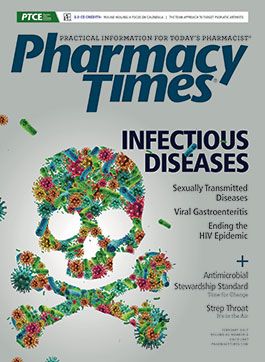Publication
Article
Lifelock's Marketing Strategy Paves the Way for the Future of Pharmacy
Lifelock is an identity protection firm that promotes itself as being able to reduce the risk of identity theft or fix it after it occurs.
Bank Robbers, Exterminators, and Dentists
Lifelock is an identity protection firm that promotes itself as being able to reduce the risk of identity theft or fix it after it occurs. The company has aired at least 3 clever commercials that are highly entertaining and thought provoking for the pharmacy profession, particularly one of the commercials, which describes a common health care procedure. The script goes like this1:
“David, you have one of the worst cavities I’ve ever seen … (pause) … OK, have a good day.” - Dentist (or some other person in white coat, in a dentist’s exam room)
“Aren’t you going to fix it?” - Patient
“Oh, I’m not a dentist, I’m a dental monitor. I just tell you when you have a bad cavity.” - Dental monitor
“(Oh, Yeah) It’s bad … (pause)… lunch?” - Dental monitor assistant
(and then they leave)
Similar commercials showing the use of Security Guard (monitoring system), during a bank robbery, and Exterminator (monitoring system), during a termite infestation, demonstrate services focused on finding, rather than resolving, problems. Unfortunately, we could just as easily script a similar commercial for drug therapy problem “interventions” performed by “pharmacist monitors(?)” for most activities we like to call “medication therapy management (MTM).”
Drug Therapy Problem Finding Is Only Half of the Need
The life and times of the comprehensive medication review (CMR) started with the premise that tens of thousands of Americans maintain suboptimal drug regimens that need be fixed. In an earnest attempt to mitigate the resultant downstream risks for poor clinical and economic outcomes, the CMR became the flagship activity for MTM that can best be described as an assessment or attempted discovery of all potential drug therapy problems at a moment in time. As a result of convention and because the CMR has manifested itself as a point-in-time effort, the CMR is typically billed using the fee-for-service model. So it shouldn’t be surprising that most pharmacies, pharmacists, and vendors perform the activity (it can’t really be an intervention if you aren’t intervening, right?) as cross-section in time, often lasting 15 minutes to an hour and almost never spanning more than 1 business day or being accompanied by follow-up or intersections with other care team members.
So what about actually fixing or resolving problems discovered during a CMR? Any pharmacist with hands-on experience with patients in a chaotic health care system will tell you that resolving drug therapy problems takes time and effort that typically involve multiple interactions and episodes of care over multiple points in time. Polypharmacy and de-prescribing must often occur incrementally. Titrations up or down need follow-up and re-titration. Patient nonadherence, by definition, is what happens between visits, not during an all-at-once 5-minute lecture from somebody in a white coat.
The Dental Monitor in the Mirror
Over the course of a multiple-decade transition from product manufacturer to retailer and, now, to practitioner, pharmacists have been reluctant to step out of their ancillary or peripheral role on the health care team to place themselves at the center of anything. Safe space for initial advancements in pharmacist care delivery was found in drug therapy problem discovery (but not resolution). We are pulled away from outcome-oriented activities by lack of professional autonomy, inability to bridge pharmacy systems with medical records and lab results, and the noise of the day-to-day procurement and reimbursement of product. Much like the dentist spoof above, are we “pharmacist fixers” or just “pharmacist monitors”?
Value-Based Payment Models Will Require Multiday, Multiweek, and even Multimonth Interventions that Move Clinical and Global Outcomes
Value-based payment models (as opposed to cost-minimization models) necessitate that patient outcomes be part of the reimbursement equation. To achieve patient outcomes in the MTM space, CMRs need to be accompanied by ongoing follow-up with the patient and the care team. Drug therapy (if it is working as desired and taken as planned) follows patients wherever they go and elicits its positive effects after they leave the clinician’s office, hospital, and pharmacy. As pharmacists, we should never hang our collective hats only on problem discovery. That is a dead-end road.
MTM program sponsors and administrators have the opportunity play an important role in pharmacy practice transformation over the next decade as payment reform marches on (regardless of what happens in Washington, DC, or state capitals). Moving orientation away from prescription-level problem finding and toward patient-level outcomes will require rethinking the current operation and the role of the CMR. The need for intervention payment models that tie together multiple interactions with the patient and care team will increase over time. And thank goodness—because in the new models of delivery and financing on the horizon, we’d do much better to be seen as problem solvers rather than just problem finders.
Troy Trygstad, PharmD, PhD, MBA, is vice president of Pharmacy Programs for Community Care of North Carolina, which works collaboratively with more than 1800 medical practices to serve more than 1.6 million Medicaid, Medicare, commercially insured, and uninsured patients. He received his PharmD and MBA degrees from Drake University and a PhD in pharmaceutical outcomes and policy from the University of North Carolina. He also serves on the board of directors for the American Pharmacists Association Foundation.
Reference
- LifeLock dentist commercial 30. YouTube website. youtube.com/watch?v=k8piX3PCsx4. Accessed January 24, 2017.







